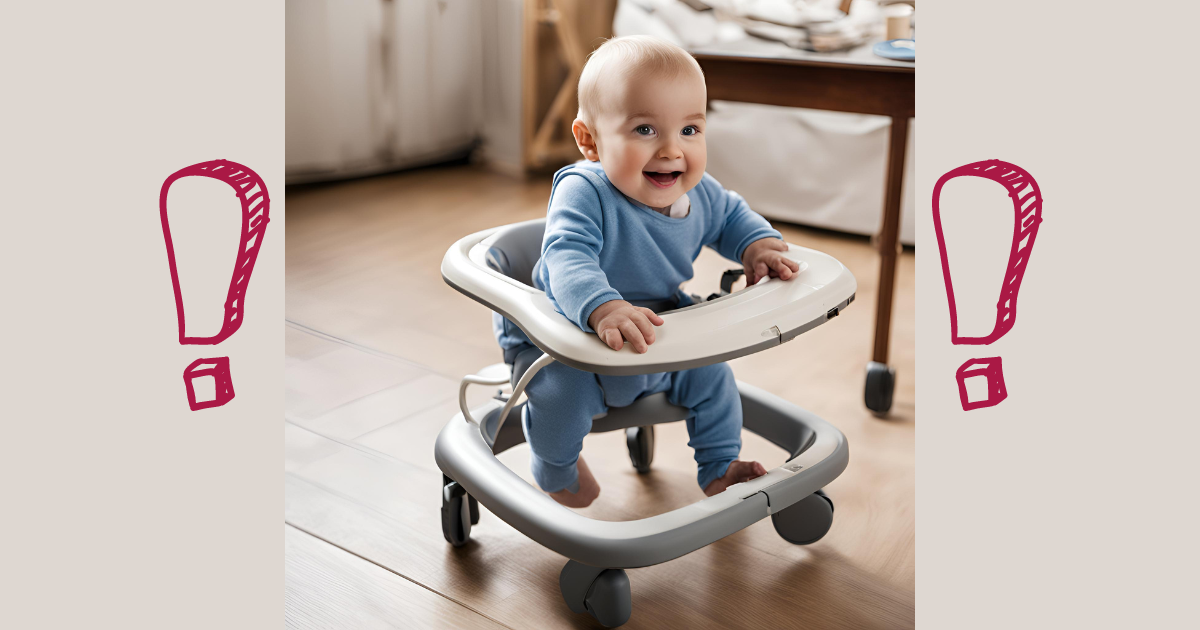Remember those first wobbly steps? That mix of pure joy and a tiny bit of terror as your little one navigated the living room? When our babies are ready to explore, we naturally want to find the best ways to help them.
But do baby walkers really help? Are they a secret weapon for turbocharging those early steps, or are they more trouble than they’re worth?
So, grab a cup of coffee (or a juice box for your little one) and let’s dive in!
Key Takeaways
Baby walkers are wheeled devices that let babies who can’t walk independently move around.
They can be fun for babies, giving them a sense of freedom and helping them explore.
Some experts worry they might delay walking and pose safety risks.
If you’re considering a walker, choose one with safety features like a wide base and brakes.
There are plenty of other ways to encourage your baby’s development, like stationary activity centers and push toys.
Always supervise your baby in a walker and create a safe environment.
By the end of this article, you’ll know whether a baby walker is right for your family and, if so, how to use it safely and effectively.
A Walk Through Time: Baby Walkers’ Shifting Reputation
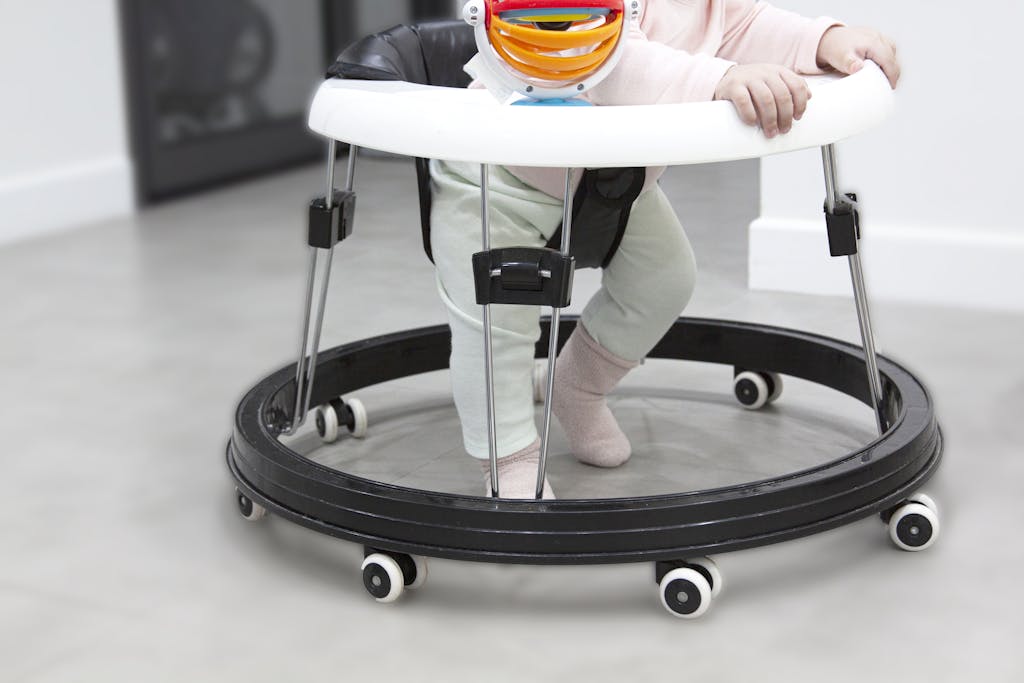
Baby walkers have been around for decades, but their image has changed dramatically.
Once seen as a helpful tool for early mobility, they’re now considered a safety hazard. Let’s take a quick trip down memory lane:
- The Early Days: Baby walkers likely emerged in the mid-20th century. Simple frames with wheels, often made of wood or metal, they were marketed as a way to let babies move independently while freeing up parents’ hands.
- The Rise in Popularity: The 60s and 70s saw baby walkers become a household staple. Parents loved their convenience, assuming they were helping their little ones learn to walk faster.
- The Safety Concerns Emerge: But by the 1970s, research started to reveal a dark side. Studies linked baby walkers to falls, burns, and even drownings. The American Academy of Pediatrics issued warnings, and the public began to question their safety.
- A Shift Towards Safety: In response, baby walker designs evolved with features like brakes and safety straps. However, the dangers remained. The Consumer Product Safety Commission (CPSC) implemented stricter regulations, and some countries even banned them entirely.
- The Future of Mobility: Today, the focus has shifted to safer alternatives: activity centers, play yards, and push walkers. Parents now prioritize their child’s safety and development over quick fixes.
The Pros and Cons of Baby Walkers
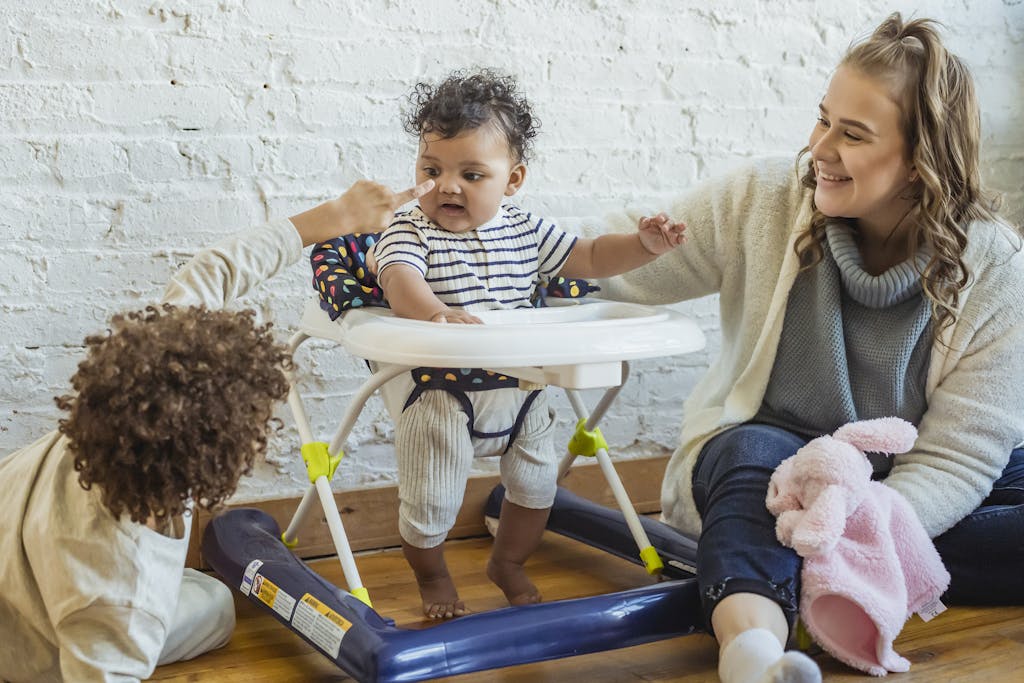
Baby walkers might seem like a convenient way to help your little one explore and develop their mobility, but it’s crucial to weigh the potential benefits against the serious risks.
Let’s get into into the pros and cons to help you make an informed decision.
Pros of Using a Baby Walker
- Mobility: Baby walkers can allow babies to move around independently, giving them a sense of freedom and encouraging exploration. This can be especially appealing to babies who are eager to explore but haven’t yet mastered crawling or walking.
- Entertainment: Some baby walkers come equipped with toys, lights, and sounds that can keep babies engaged and entertained. This can be helpful for parents who need a few minutes to complete tasks or for babies who easily get bored.
- Parental Convenience: Baby walkers can provide some temporary relief for parents who need to multitask. They can allow parents to focus on other tasks, knowing that their baby is safe and entertained.
Cons of Using a Baby Walker
- Falls: Baby walkers are a leading cause of serious injuries, with falls being the most common. Babies can easily roll or fall out of walkers, especially if they’re near stairs or uneven surfaces. These falls can result in broken bones, head injuries, and other serious health problems.
- Burns: Babies using walkers can easily reach hot surfaces like stoves, ovens, or fireplaces. They can also reach hot liquids on tables or countertops. Burns from hot surfaces or liquids can be extremely painful and leave permanent scars.
- Drowning: Baby walkers are extremely dangerous near water sources, including bathtubs, pools, and even buckets. Babies can easily roll into water, and their weight can cause them to overturn containers, leading to drowning.
- Access to Unsafe Objects: Baby walkers give babies access to objects they might not otherwise reach. This includes cleaning supplies, medications, and other potentially harmful items. Ingesting or coming into contact with these objects can lead to serious health problems or poisoning.
- Developmental Concerns: Some experts believe that baby walkers can actually hinder a baby’s natural development of gross motor skills, balance, and coordination. They suggest that babies who spend a lot of time in walkers may not develop the necessary skills to crawl, stand, and walk independently.
- Cognitive Development: Spending less time on the floor could potentially limit opportunities for exploration, problem-solving, and interaction with their environment.
- Social Development: Time in a walker can also limit social interaction with caregivers and other children.
Baby Walkers and Learning to Walk
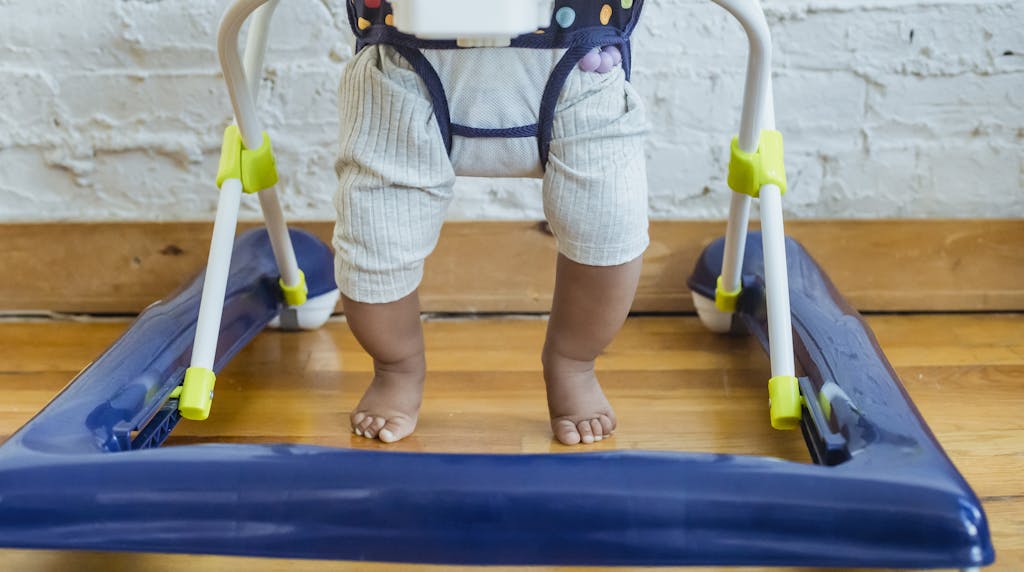
Many parents believe that baby walkers can help their little ones learn to walk faster. However, the truth is that baby walkers can actually hinder a baby’s natural development of walking skills.
Let’s break down the misconceptions and explore the science behind why baby walkers can actually be detrimental to a baby’s development.
Misconceptions about Baby Walkers and Walking
The idea that baby walkers speed up walking is a common misconception.
Many parents see their babies bouncing around in walkers and assume that they are developing the necessary muscles and coordination to walk. However, this isn’t necessarily true.
The Science: Baby Walkers Don’t Help Walking, They May Hinder It
- Different Skills: Walking involves a complex set of skills, including balance, coordination, and muscle strength. While baby walkers allow babies to move around, they don’t actually help them develop these skills.
- Overreliance: Babies who spend a lot of time in walkers may become over-reliant on them for mobility. This can make it harder for them to learn to crawl, stand, and walk independently.
- Floor Time is Key: Crawling, cruising, and standing are all essential steps in a baby’s journey to walking. These activities help babies develop the muscles, coordination, and balance needed to walk independently.
Alternatives to Promote Walking
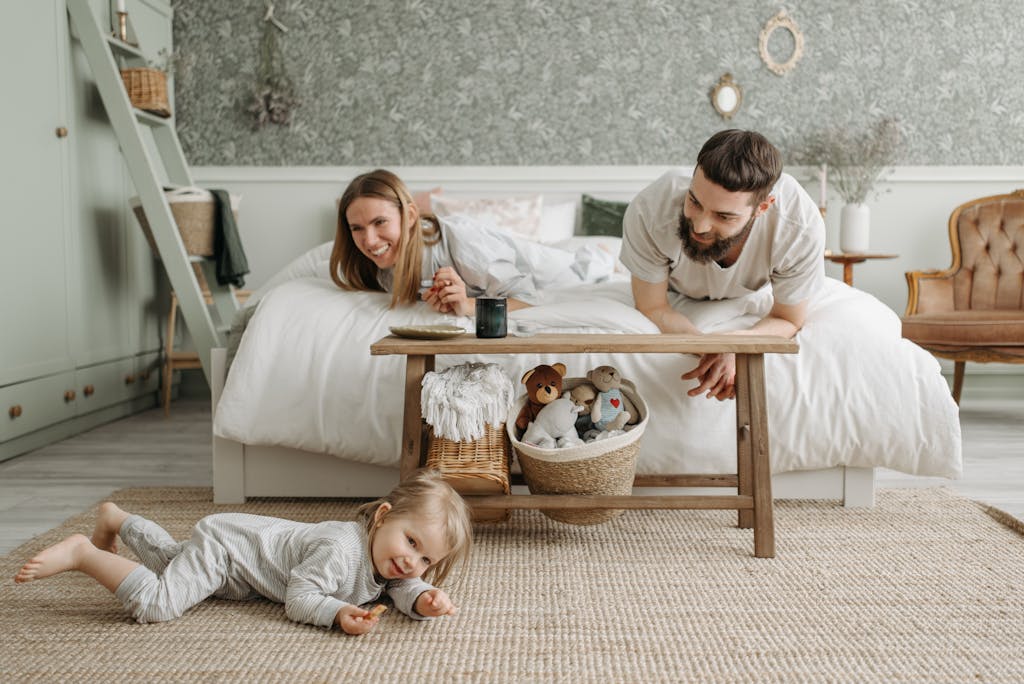
Instead of relying on baby walkers, there are many safer and more effective ways to promote a baby’s walking development. Here are some tips:
- Floor Time: Encourage your baby to spend plenty of time on the floor. This allows them to explore their environment, develop their gross motor skills, and learn to crawl and cruise.
- Standing: Encourage your baby to stand by offering them support or using a sturdy toy as a stand-up aid.
- Walking Assistance: Help your baby take their first steps by holding their hands or using a walker as support.
Four Safe Alternatives to Baby Walkers
While baby walkers might seem appealing, there are many safer and more beneficial alternatives to promote your baby’s mobility and development. Let’s explore some of the best options:
1. Upright Activity Centers
Activity centers, also known as “jumperoos” or “jumpers,” offer a safe and engaging way for babies to explore their surroundings while standing.
They often feature a variety of toys, lights, and sounds to keep babies entertained. Here are some advantages:
- Safety: Activity centers are designed to be stable and secure, ensuring that babies can’t fall out or reach dangerous objects. They are often made with padded materials to protect babies from bumps and bruises.
- Standing Practice: They encourage babies to stand and practice their balance, which is an important step in learning to walk. They can help babies build strength in their legs and develop their sense of balance.
- Entertainment: Activity centers provide a stimulating environment for babies to explore. They often have a variety of toys and activities that can keep babies engaged for extended periods.
2. Play Yards or Playpens

Play yards or playpens offer a safe and enclosed space for babies to play and move around.
They are particularly useful for parents who need to keep their babies contained while they tend to other tasks.
- Safety: Play yards provide a safe and contained environment, preventing babies from accessing dangerous objects or areas.
- Mobility: They allow babies to crawl, roll, and move freely within a safe space, encouraging their gross motor skills development.
- Peace of Mind: Play yards provide parents with peace of mind knowing their baby is safe and secure.
3. Push Walkers
Push walkers are a great alternative to traditional baby walkers. They encourage independent mobility while promoting balance and coordination.
They are typically designed to be pushed forward by the baby, requiring them to use their legs and core strength.
- Balance and Coordination: Push walkers help babies develop their balance and coordination, preparing them for walking.
- Independent Mobility: They encourage babies to move around independently, providing them with a sense of accomplishment and freedom.
- Safety: Push walkers are generally safer than traditional baby walkers because they are less likely to cause falls or allow access to unsafe objects.
4. Other Safe Toys
Many other toys can encourage your baby’s movement and development without the risks associated with baby walkers. Here are some ideas:
- Push Toys: Push toys are classic toys that help babies develop their coordination, balance, and strength. They can be simple toys with wheels or more elaborate toys with features like lights and sounds.
- Ride-On Toys: Ride-on toys like rocking horses, tricycles, and ride-on cars can help babies develop their gross motor skills, coordination, and sense of balance.
- Stacking Toys: Stacking toys can help babies develop their hand-eye coordination and problem-solving skills.
Remember: Always supervise your baby when they are using any toys, even those that are considered safe. Choose toys that are appropriate for your baby’s age and developmental stage.
Four Activities to Help Your Infant Learn to Walk Without a Walker
While it’s tempting to rush the process, remember that learning to walk is a natural developmental milestone.
By creating a safe and stimulating environment, you can empower your baby to reach this milestone at their own pace.
1. Floor Time: The Foundation for Walking
Floor time is crucial for your baby’s physical, cognitive, and social development. It’s the perfect opportunity for them to explore their world, build strength, and practice essential skills.
- Safe and Stimulating Environment: Create a safe and engaging floor play area free from hazards. Remove any sharp objects, cords, or small toys that could be a choking hazard.
- Variety and Exploration: Offer a variety of toys that encourage your baby to crawl, reach, and move. Consider age-appropriate toys like stacking blocks, soft balls, and textured toys.
- Playtime: Engage with your baby during floor time. Talk to them, sing to them, and play interactive games.
- Tummy Time: Don’t forget tummy time! It’s essential for strengthening your baby’s neck, back, and core muscles, which are vital for crawling and walking.
2. Encouraging Standing
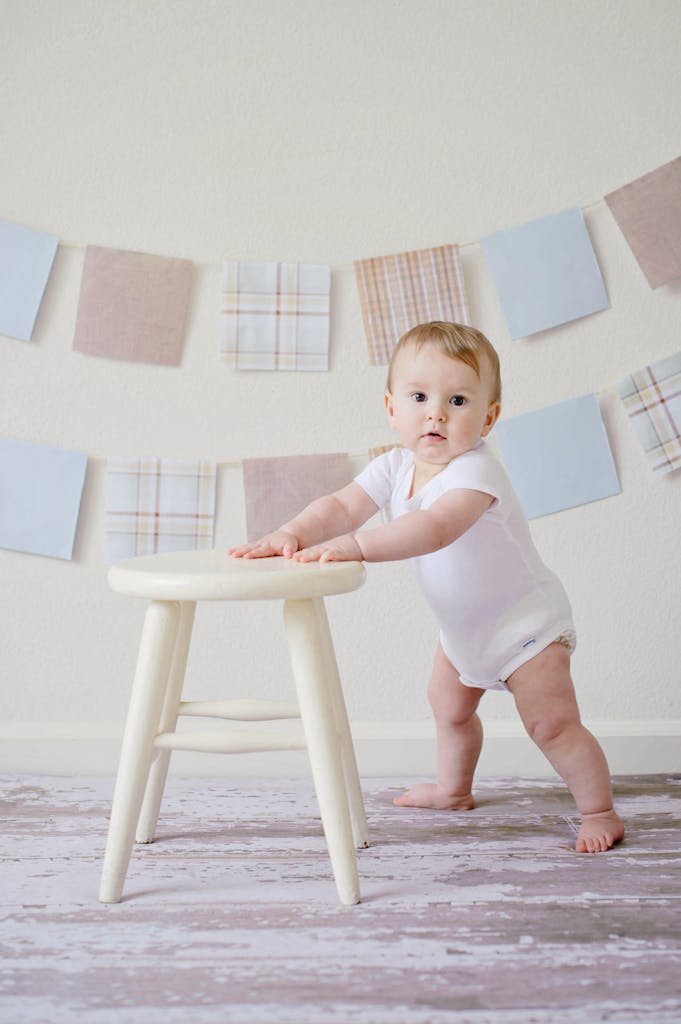
Once your baby is ready to start standing, you can help them practice.
- Stable Support: Offer support as they stand, using a sturdy piece of furniture or a playpen.
- Toys as Support: Place toys or objects slightly out of reach, enticing them to stand and reach for them.
- Positive Reinforcement: Praise and encourage your baby as they try to stand, letting them know you’re proud of their efforts.
3. Assisting First Steps
When your baby shows signs of wanting to walk, be there to offer support.
- Hand Holding: Hold your baby’s hands as they take their first steps.
- Walking Toys: Use a walker as a support tool if your baby needs a little help.
- Safe Environment: Ensure the walking area is clear of obstacles and potential hazards.
4. The Power of Praise and Encouragement
Every step your baby takes is a victory! Celebrate their progress with praise and encouragement. Let them know how proud you are of them and how excited you are to see them grow.
Remember: Every baby develops at their own pace. Be patient, be encouraging, and most importantly, be there for your little one as they embark on their walking journey.
Frequently Asked Questions (FAQs)
Additional Resources
For more information on baby safety and development, check out these resources:
- American Academy of Pediatrics (AAP): https://www.aap.org/
- Consumer Product Safety Commission (CPSC): https://www.cpsc.gov/
- Canadian Paediatric Society: https://www.cps.ca/
Remember, the information provided here is not a substitute for professional medical advice. Consult with your pediatrician for personalized guidance on your baby’s development and safety.
Conclusion
Baby walkers, while tempting for their convenience, present serious risks to your little one. They can lead to falls, burns, and even drowning, and may actually hinder your baby’s natural development of walking skills.
Instead of rushing your baby’s walking journey, prioritize floor time, safe alternatives like activity centers, play yards, and push walkers, and encourage your baby’s natural development.
Remember: You are your baby’s best advocate. Stay informed, make safe choices, and celebrate every milestone!
